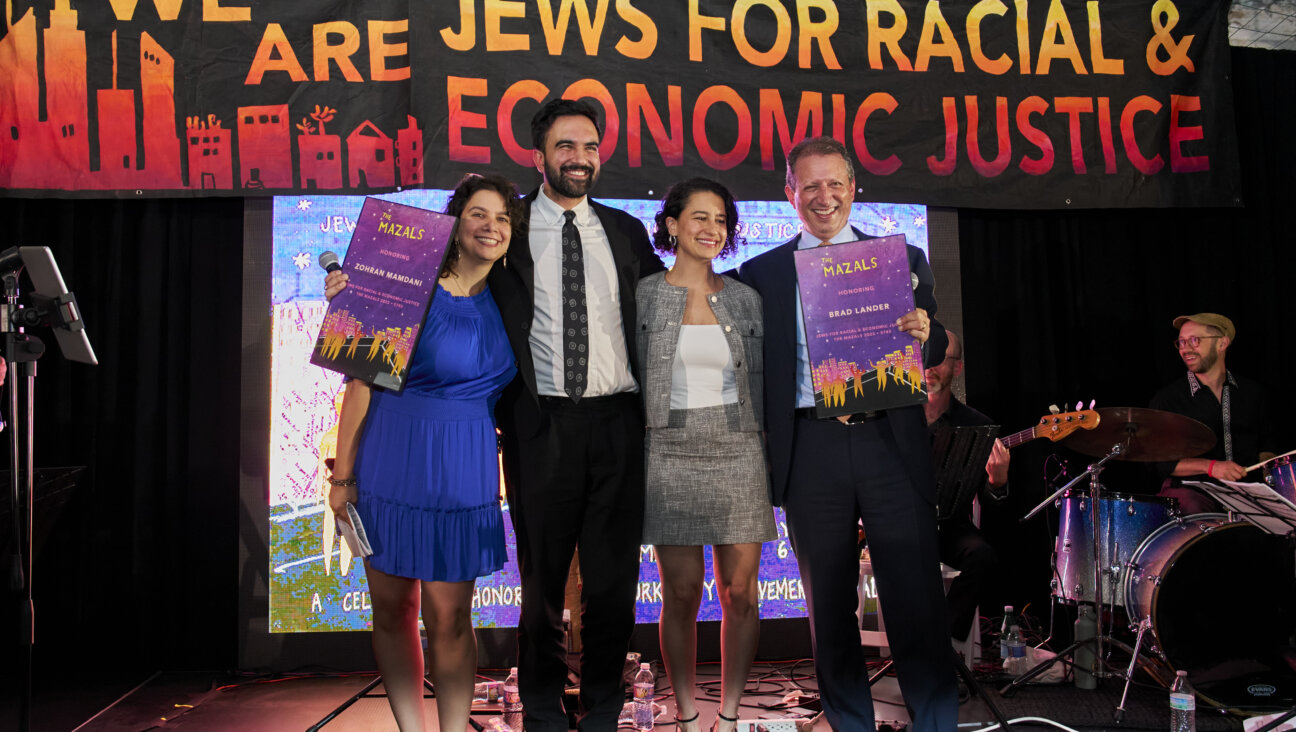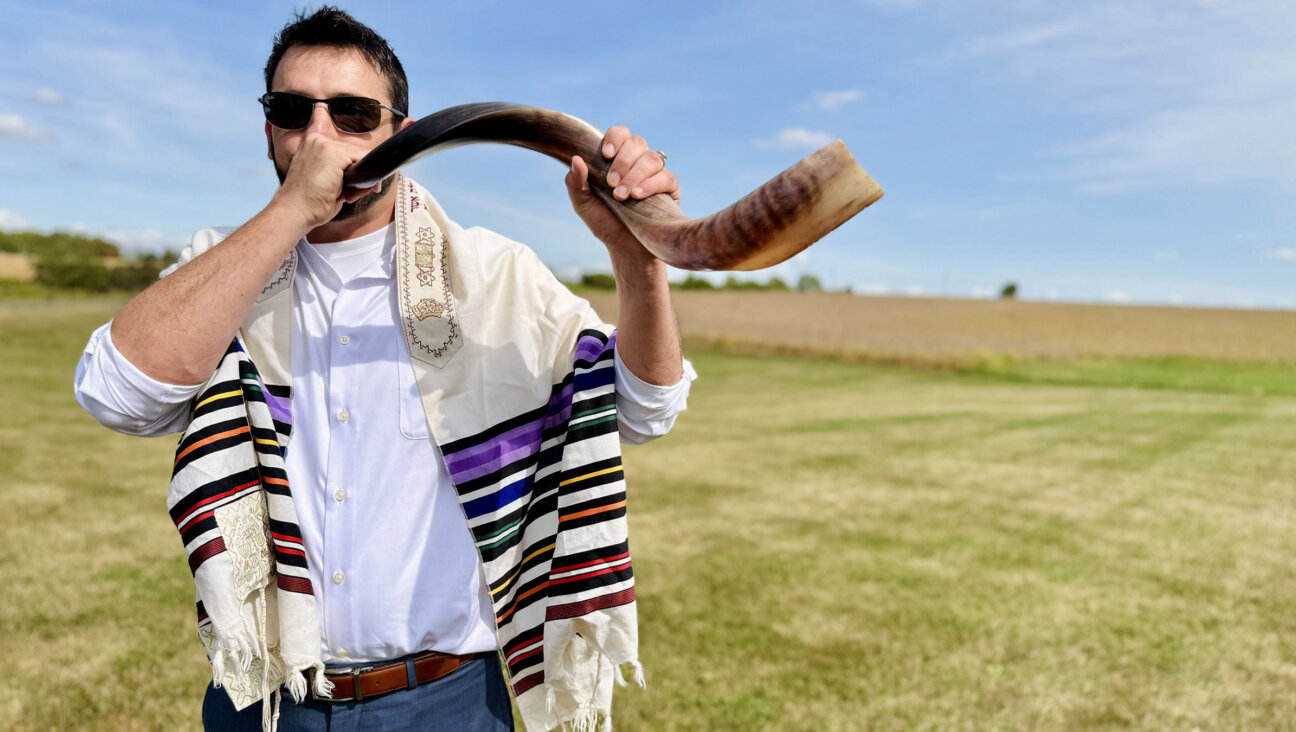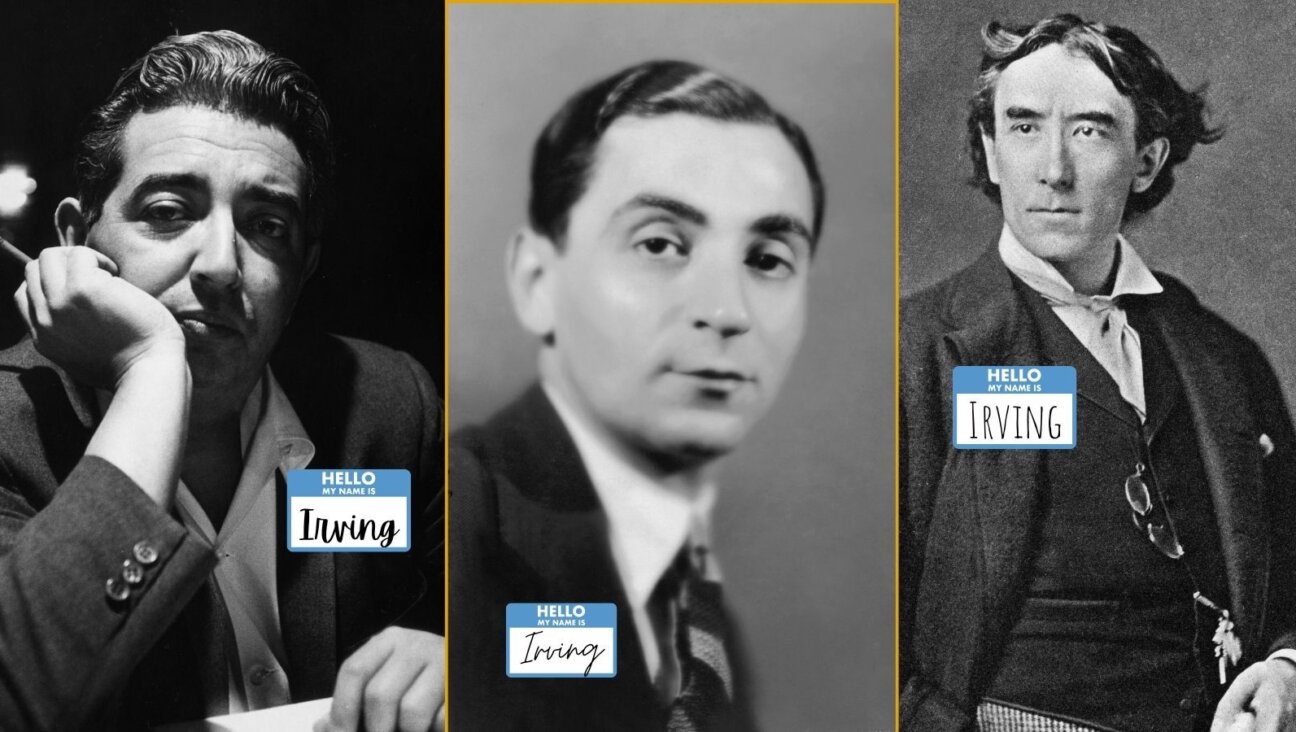Deconstructing Honey Cake

Image by COURTESY OF LEAH KOENIG
‘Honey cake is not so much loved as revered,” Arthur Schwartz writes in “Arthur Schwartz’s Jewish Home Cooking: Yiddish Recipes Revisited” (Ten Speed Press, 2008). Truer culinary words have never been written. Honey cake is a symbolic super food and an undisputed fixture on many Rosh Hashanah tables. But just as with fruitcake, which routinely is served and goes uneaten on Christmas, honey cake’s inclusion in the Rosh Hashanah meal is based more on tradition than on taste.
Luckily, honey cake is dripping with tradition. Variations of honey-sweetened desserts have existed for thousands of centuries and in far-flung locales, from Ancient Egypt and Rome to China. Recent archaeological discoveries of beehives in Tel Rehov, Israel, also suggest that biblical Israel was indeed a land of milk and honey. According to Stephen Buchmann’s book, “Letters From the Hive: An Intimate History of Bees, Honey, and Humankind” (Bantam, 2005), German-Christian pilgrims developed a taste for honey cake on their trips to the Holy Land during the Middle Ages. They enjoyed the dish enough to take it home, where it developed over time into its contemporary form.
Not surprisingly, the first Jewish honey cakes (or lekach, which comes from the German word lecke, meaning “lick”) originated in Germany around this time. During this period, the dessert was primarily eaten on Purim and Shavuot and sometimes served as a treat for young yeshiva students. As Gil Marks notes in “The World of Jewish Cooking” (Simon & Schuster, 1996):
“Honey was smeared on a slate containing the letters of the alphabet and the child licked them off so that the ‘words of the Torah may be sweet as honey.’ Afterward, the aspiring scholar was presented with honey cakes, apples and hard-boiled eggs.”
From Germany, the dish traveled to Eastern Europe, where Jews celebrated with honey cakes at simkhot (happy occasions) and holidays alike. According to Marks, the overall use of honey as an ingredient declined in Eastern European cooking during the 17th century but remained popular in Jewish cuisine.
Interestingly, many recipes for honey cake claim that the dessert keeps especially well and tastes better as it ages. Some even specify that the cake should be made several days to a week in advance of serving to allow the flavors to develop. While it seems counterintuitive to let a fresh-baked good go uneaten, there is scientific justification behind postponing that first slice: Honey, it turns out, is a powerful preserving agent.
“The high sugar content of honey, along with its natural acidity, creates a very unpleasant habitat for single-celled microbes,” Buchmann explains in “Letters From the Hive.”
Honey’s natural ability to keep a cake fresh would have made it particularly valuable in the days before refrigeration. Even today, it allows home cooks to check off one dish from their daunting pre-holiday to-do list.
In America, honey cakes have maintained their status as an iconic dessert for the Jewish New Year, especially on Ashkenazi menus. Marcy Goldman writes, in the 10th anniversary edition of “A Treasury of Jewish Holiday Baking” (Whitecap Books, 2009), “… honey cake, like most comfort food, is a very personal thing… there is a particular loyalty around honey cakes, rivaled only by the matzoh ball soup debate (hard ones versus soft and fluffy ones).” Virtually everyone — or everyone’s grandmother — has a honey cake recipe tucked away in a recipe box, waiting to be unearthed for Rosh Hashanah. So why does a cake with such a storied legacy and symbolic power continue to get snubbed at the table? Because a good honey cake is hard to find.
While individual recipes vary widely, most tasters would agree that the perfect honey cake is moist and springy, with a gooey crumb and a gentle hint of spice to round out the honey’s sweetness. The majority of honey cake recipes, however, deliver a much drier and blander product. Or as Deb Perelman notes on her popular blog, Smitten Kitchen, “… every honey cake I have been forced to try has been wretched…[dry], coarse and unloved…. This life is too short to eat terrible cake.”
Goldman, who is widely considered the doyenne of Jewish baking and a honey cake specialist, says that most recipes fall short by skimping on the oil and other wet ingredients that lend the cake its nuanced texture and flavor. The key to honey cake nirvana, then, is to start with a relatively moist batter (Goldman relies on vegetable oil, orange juice and warm coffee, along with the honey) and then tweak the other ingredients — spices, zests, etc. — to taste. The proof of her method is indeed in the pudding: a sweet, supple cake that deserves its spot in the Rosh Hashanah canon. So keep honey cake on the menu not just out of respect for tradition, but also out of love.
Leah Koenig writes a monthly column for the Forward on food and culinary trends. Contact her at [email protected]. For more Rosh Hashanah recipes, visit our new Forward and Hazon partnership blog, The Jew and the Carrot.
A Honey Cake Worth Baking
Adapted from “A Treasury of Jewish Holiday Baking”
Serves 10-12
31⁄2 cups all-purpose flour
1 tablespoon baking powder
1 teaspoon baking soda
1⁄2 teaspoon salt
4 teaspoons cinnamon
1⁄2 teaspoon ginger powder
1⁄2 teaspoon allspice
1⁄8 teaspoon nutmeg
1 cup vegetable oil
1 cup light-colored honey (e.g., orange blossom, clover or tupelo)
1 cup sugar
1⁄2 cup brown sugar
2 large eggs
1 teaspoon vanilla extract
1 cup warm coffee or strong brewed tea
3⁄4 cup orange juice (not from concentrate)
1⁄2 teaspoon orange zest
1⁄2 cup sliced toasted almonds, optional
powdered sugar for dusting, optional
1. Preheat the oven to 350 degrees, and evenly grease a Bundt pan with butter, vegetable oil or cooking spray. In a large bowl, whisk together the flour, baking powder, baking soda, salt and spices.
2. Make a well in the center and add the oil, honey, both sugars, eggs, vanilla, coffee, orange juice and zest. Using a whisk or an electric mixer set to low speed, combine the ingredients to make a stiff batter.
3. Spoon batter into prepared pan. Place the pan on a baking sheet, and bake until the cake springs back when you touch it in the center, about 1 hour. (Be careful not to overbake.) Let cake stand for 15 minutes before removing it from the pan. Then invert onto a wire rack to cool before slicing. Serve topped with almonds and dusted with powdered sugar, if desired.
















